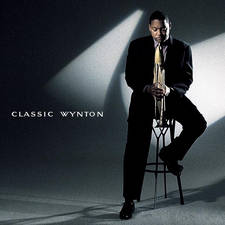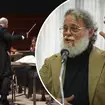Beethoven's music: John Suchet explores the Symphonies
The former British Prime Minister James Callaghan was asked late in his long life whether there was anything he regretted not achieving. He replied that he wished he could have written Beethoven’s nine symphonies.
The former British Prime Minister James Callaghan was asked late in his long life whether there was anything he regretted not achieving. He replied that he wished he could have written Beethoven’s nine symphonies. For a conductor they are a rite of passage: Herbert von Karajan recorded the complete cycle three times. No year goes by without dozens of performances of one or more of the nine; barely a year goes by without one or more performances of the complete cycle somewhere in the world.
It is customary to dismiss the first two symphonies – they owe too much to Mozart, Beethoven had not yet found his style – then say of the remaining seven that the odd numbers are important, the even ones less so.
Well there is one element of truth only in that: the odd numbers certainly are important. The others all are too.
First Symphony
Beethoven was nearly 30 years of age before he completed his First Symphony. He clearly thought about it long and hard; he knew he would be judged on it. It was, if you like, a statement of intent. Sure enough, from the very first note, it is pure Beethoven. He begins it in a totally unconventional way – three sets of rising chords. Hello? I’m here. Already he is breaking the rules.
Second Symphony
He breaks them still further in the Second Symphony. He calls the third movement aScherzo (literally, a Joke), the first time any movement of any symphony had been thus labelled. The normal title was Minuet, clearly an old-fashioned concept for Beethoven.The opening of the final movement, like a succession of coiled springs, must have stunned his first audience, and still brings us up short today.
Third Symphony 'Eroica'
And so we come to the Third Symphony, the Eroica. It begins with two massive chords, a call to attention. Beethoven grabs you in bar one, and does not let you go. Already in the third bar the violins descend to a totally wrong note – wrong key, wrong everything, it shouldn’t be there – but almost in the nature of a crime writer laying clues, it is resolved much later in the work.
Halfway through the first movement the first horn comes in a bar early. At rehearsal Ferdinand Ries, hearing this, called the player a dolt and told Beethoven he would deal with him afterwards; Beethoven, to Ries’s mortification, told him that was how it was meant to be. The first movement is the longest movement of any symphony to date.
The second movement is a funeral march. When, years later, Beethoven was told Napoleon Bonaparte had died on St Helena and it was suggested he might like to compose a funeral march, Beethoven replied he already had. He was referring to this movement. Go to a performance of this Symphony, and in the middle of the third movement watch the three horn players grow visibly pale as their great solo passage looms – then imagine what it must have been like to horn players in Beethoven’s day, playing natural horns with no valves, just their lips and right fist in the bell allowing them to change pitch.
The huge fourth movement begins with a flourish, then resorts almost to a joke, single notes plucked on the strings, fragmented, varied, before the glorious main theme finally comes in. In performance, check that the first violins play the two unexpected grace notes at the beginning of the first bar. They are often dropped. Black mark to any conductor who discards them.
This was the symphony Beethoven – recognising its sheer size and quality – originally intended dedicating to Napoleon, angrily scratching his name off the title page when Napoleon declared himself Emperor.
The Eroica, written in 1803, was the single most important work Beethoven had composed to date. It revolutionised not just the symphony, but music itself, moving it into a new century. It is like a novel in the form of notes. Years later Beethoven was asked which of his symphonies was his favourite: Eh! Eh! the Eroica. And yes, it is my favourite of the nine.
Fourth Symphony
The Fourth has suffered from being wedged, as it were, between the monumental Third and the mighty Fifth. It is perhaps the least heard of the nine. So treat yourself, enjoy the gallop of the first movement, wonder at the harsh chords of descent into despair in the second movement, the syncopated rhythms of the third movement, and try to keep your hands and feet still in the impossibly lively fourth movement.
Fifth Symphony
The Fifth Symphony – someone really said to me once: I know Beethoven. Didn’t he write Beethoven’s Fifth? – is the most famous symphony in the history of music, with the best known opening bars in all music. Yet try humming them and the bars that follow. Impossible. A motif rather than a theme, and so compressed and full of such energy that they are universally known. Used by the BBC to tap out of the theme of radio broadcasts to the Free French during the Second World War. Dot-dot-dot-dash. Morse code for V. V for Victory.
For the first time in any symphony by any composer, the three-note theme is carried through the whole work. At the opening of the final movement, after a mysterious passage of ghostliness, an orchestral sound so rousing that at the first performance in Paris, an old soldier in uniform rose to his feet and cried out Vive l’Empereur!
Sixth Symphony 'Pastoral'
The Sixth, the Pastoral, Beethoven’s evocation of the countryside, and the only time Beethoven ever wrote down on paper exactly what it was he was trying to represent.Joyful feelings on being in the countryside. Bird calls, a running stream, a peasant dance, a storm, the shepherds’ hymn of thanks after the storm has passed.
Check out the second bassoon in the middle of the country dance section. Three isolated notes, then four. Repeated. Why? Because Beethoven had seen a bassoonist playing like that in a band in a tavern in one of the villages dotting the Vienna Woods, seeming to fall asleep between the notes, then waking up just in time to play them. And the country dance itself? Again, Beethoven had witnessed country folk swirling round to infectious rhythms, and he recreated them in this symphony. Beethoven loved nature: this is his homage to it.
Those bird calls, by the way, represent the nightingale, the cuckoo, and … (the one you always forget) the quail. You can be forgiven for getting it wrong. Beethoven himself wasn’t so sure. Years later, walking along the brook with his helper Schindler, he pointed to the spot where he had sat and composed the Pastoral. He then pointed up to a tree and told Schindler that was where he had heard the yellowhammer, which inspired him to include it in the symphony. A yellowhammer’s song rises like a broken chord – nothing remotely similar is in the symphony. True, there is some doubt over the translation of the word Beethoven used, but still no possible interpretation of it accords with what he actually composed!
Seventh Symphony
Eighth Symphony
If the Eighth, like the Fourth, suffers from being wedged between two mighty works, listen to Toscanini’s 1939 recording of it, and you will hear in the build-up to the first movement climax music that catches fire. Marvel too at Beethoven’s audacity in the deliberate discords in the slow movement.
Ninth Symphony
The Ninth, the Choral. Greatest Symphony ever written. Voices and music. New. Revolutionary. A theme adopted by the European Union as its anthem. The piece chosen by Leonard Bernstein to conduct after the Berlin Wall came down in 1989, substituting the word Freiheit (freedom) for Freude (joy) in the final movement. (Beethoven would surely have approved.) A slow movement of such beauty time seems to stand still. And in an outrageously audacious passage, in the white heat of the final movement the music really does stand still, as Beethoven puts on the brake and literally stops everything. Whole chapters of books, whole books, have been written about this symphony. Just listen to it.
By the way, Beethoven carried a book of Schiller’s poetry with him from his student days, always intending one day to set the poem An die Freude to music. The edition he carried contained the line: Bettler werden Fürstenbrüder [Beggars will become the Brothers of Princes]. In 1803 Schiller published a new edition of his poetry, substituting the line Beethoven used in his Ninth Symphony: Alle Menschen werden Brüder [All Mankind Will Become Brothers].
The Nine. Interesting that Beethoven composed the first eight in around 13 years. There was then a gap of 12 years, before he composed the Ninth. He was working on sketches for the Tenth three years after that. It was not that after the Eighth he felt he had said it all, then changed his mind: he had had the idea for a Choral Symphony years before. Why the long gap between numbers Eight and Nine? More than likely just the sheer difficulty of raising an orchestra sufficiently accomplished to play his music (remember the disastrous concert on 22 December 1808 at which the Fifth and Sixth were premiered).
Beethoven’s Nine Symphonies. The most important such body of work in all music.


























